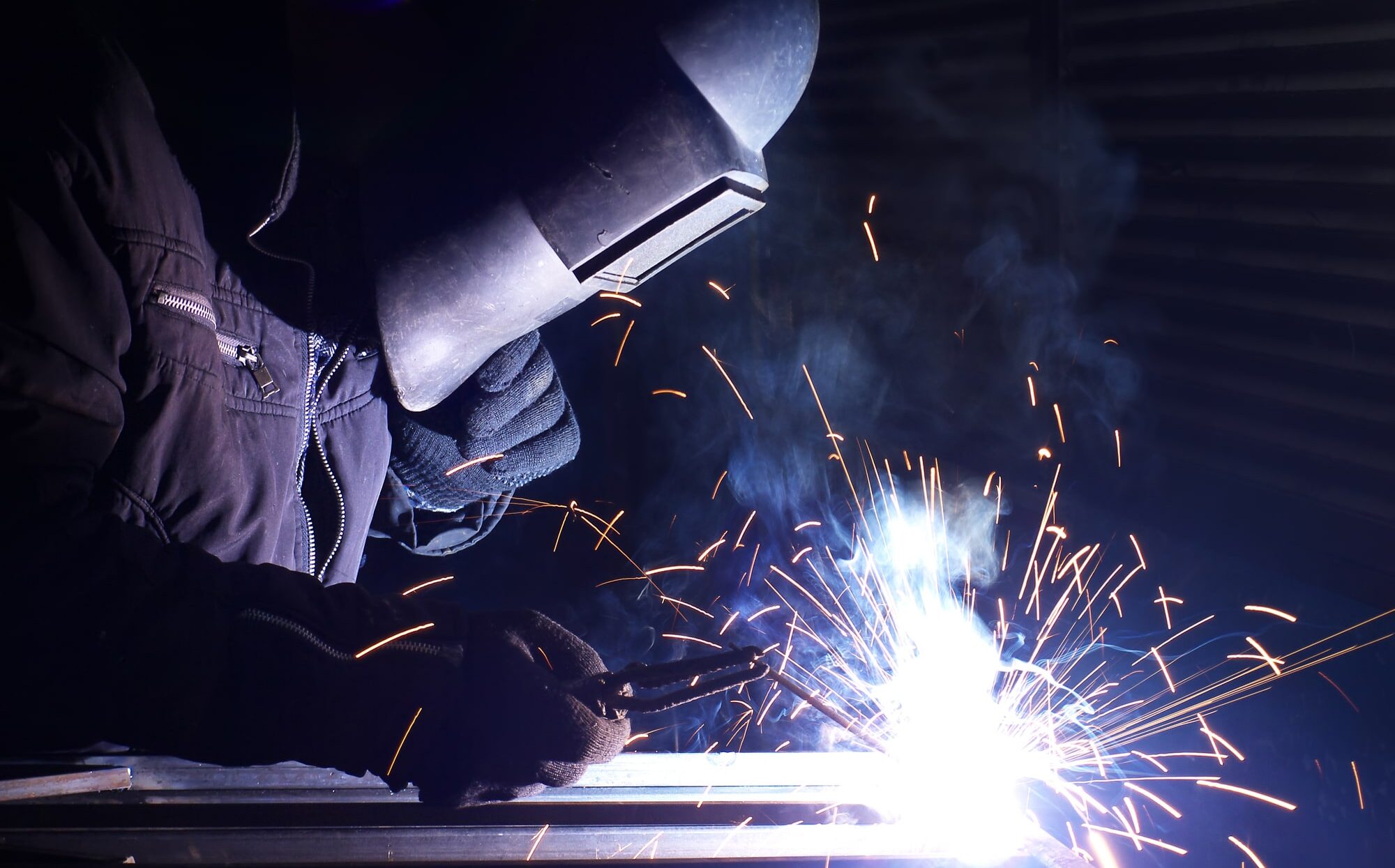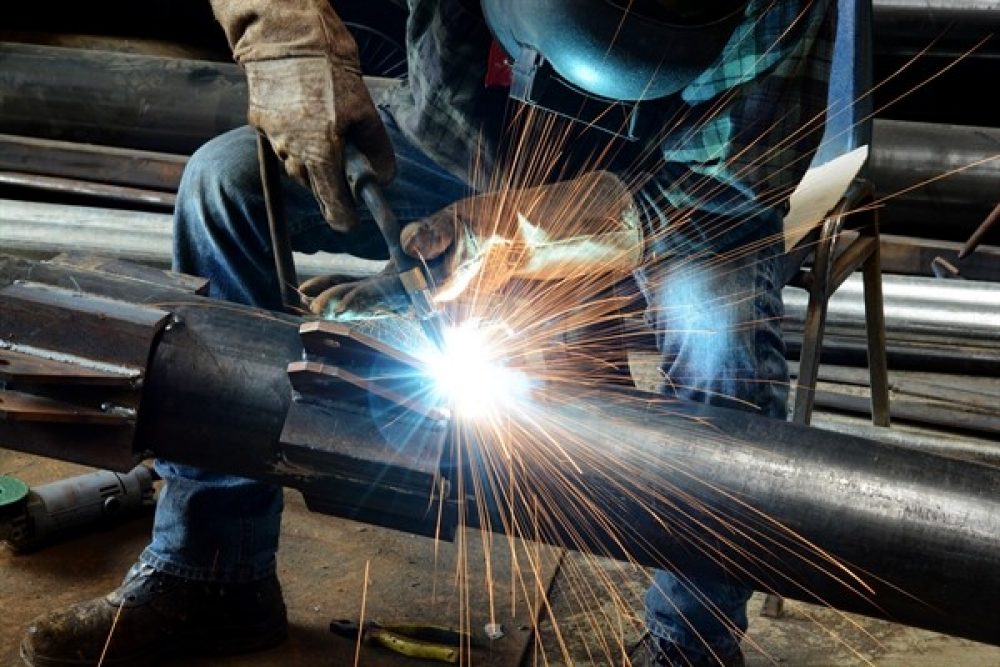Expert welding repair tips from Belgrade Welding professionals
Everything about Welding: Key Insights Into Techniques and Ideal Practices for Success
Welding includes a selection of techniques, each fit for specific materials and applications. Comprehending these methods, such as GMAW, SMAW, and TIG, is necessary for achieving perfect outcomes. The best equipment and safety and security methods can not be overlooked. As prep work and fixing play important roles in the welding process, understanding these components can considerably improve the high quality of the last item. What are the crucial aspects that assure an effective weld?
Understanding Various Welding Techniques
Welding techniques incorporate a variety of approaches, each matched to certain applications and products. Amongst the most common techniques are Gas Metal Arc Welding (GMAW), Shielded Metal Arc Welding (SMAW), and Tungsten Inert Gas Welding (TIG) GMAW, additionally recognized as MIG welding, is prominent for its rate and versatility, making it suitable for slim products. SMAW, or stick welding, is favored for its simplicity and effectiveness in exterior settings, specifically with thicker metals. TIG welding supplies precision and control, making it suitable for complex work and non-ferrous metals (Welding). Each method has its one-of-a-kind advantages and factors to consider, allowing welders to choose the very best technique based upon the task's requirements, product kind, and desired results. Understanding these techniques is crucial for effective welding
Necessary Welding Equipment and Devices
While various welding methods call for particular abilities, the right tools and tools are equally important for attaining top quality outcomes. Essential welding tools consists of welding machines, which differ relying on the technique-- such as MIG, TIG, or stick welding. Safety gear, consisting of aprons, handwear covers, and headgears, assurances safety and convenience during the procedure. In enhancement, clamps and fixtures aid protect materials in area, ensuring accuracy in welds. Consumables like welding rods, cord, and shielding gas are also important parts that influence the quality of the weld. Devices such as mills and cutters facilitate surface area preparation and post-weld finishing, adding to a specialist end result. Purchasing premium tools eventually enhances the efficiency and efficiency of welding projects.
Security Practices in Welding
Appropriate safety and security practices are essential in the welding sector to shield workers from potential hazards. Welders have to put on ideal individual safety tools (PPE), including helmets with appropriate shading, gloves, and flame-resistant apparel. Adequate air flow is vital to minimize direct exposure to unsafe fumes and gases generated during the welding process. In addition, employees need to be educated in the right handling of welding tools to stop crashes. Fire safety steps, such as keeping flammable materials away from the welding location and having fire extinguishers easily available, are essential. Routine evaluations of devices and work spaces can assist determine potential hazards prior to they bring about accidents. By sticking to these safety techniques, welders can produce a more secure working environment and decrease dangers linked with their profession.
Readying Products for Welding
Preparing materials for welding is an essential action that significantly affects the quality and integrity of the end product (Montana Mobile Welding and Repair Fabrication). Proper preparation involves cleansing the surface areas to get rid of contaminants such as corrosion, dust, and oil, which can endanger the weld. Techniques such as grinding, sanding, or making use of solvents are generally used to attain a clean surface area. Additionally, making certain that the products mesh snugly is essential; spaces can cause weak welds. It's additionally vital to think about the positioning and positioning of the elements, as this will certainly influence the ease of welding and the final outcome. Lastly, picking the appropriate filler material and making sure compatibility with the base metals is vital for attaining solid, long lasting welds
Tips for Getting High-Quality Welds
Attaining top quality welds requires attention to information and adherence to best techniques throughout the welding process. Proper joint preparation is vital, guaranteeing surfaces are complimentary and clean from pollutants. Selecting the suitable filler product and welding method based on the base metals is vital for suitable bonding. Preserving constant travel rate and angle while welding can protect against problems and promote uniformity. Furthermore, regulating warmth input is important; too much warmth can cause bending and weakened joints. If needed, regularly checking the welds throughout the procedure permits for instant modifications. Employing ideal post-weld treatments, such as cleansing and stress relief, can boost the resilience and stability of the weld, eventually making sure an effective end result.
Troubleshooting Typical Welding Issues
Welding commonly provides anchor obstacles that can influence the quality and honesty of the end product. Usual problems such as porosity, inconsistent weld beads, and overheating can arise, each calling for particular troubleshooting methods. Recognizing these issues is essential for welders to enhance their skills and attain excellent results.
Porosity Issues Clarified
Although porosity can usually be forgotten, it remains a vital concern in welding that can endanger the stability of an ended up item. Porosity refers to the existence of tiny gas pockets within the weld grain, which can weaken the joint and lead to early failure. This problem generally occurs from pollutants, dampness, or improper securing gas protection throughout the welding process. To mitigate porosity, welders ought to verify that the base products are dry and tidy, make use of ideal securing gases, and maintain regular welding criteria. On a regular basis examining the tools and environment can likewise assist determine possible problems prior to they manifest in the weld. Attending to porosity properly is essential for attaining solid, resilient welds that fulfill top quality criteria.

Irregular Weld Beans
Irregular weld grains can significantly affect the top quality and toughness of a completed product. Different aspects contribute to this concern, consisting of inappropriate traveling speed, incorrect amperage settings, and irregular electrode angles. When the welder relocates too rapidly, a grain may show up narrow and do not have penetration, while moving as well gradually can create excessive accumulation. In addition, utilizing the wrong amperage can cause either undercutting or too much spatter, both of which concession weld honesty. The welder's technique, such as inconsistent lantern motion, can also bring about irregular bead look. To minimize these problems, welders ought to concentrate on keeping stable, controlled movements and ensuring proper tools settings to accomplish uniformity in their welds. Consistency is essential to attaining trusted and strong welds.
Overheating and Bending Issues
Excessive heat during the welding procedure can cause considerable overheating and deforming issues, impacting the architectural integrity of the work surface. These troubles often materialize as distortion, which can compromise positioning and fit-up, making more assembly challenging. Variables adding to overheating include the selection of welding parameters, such as voltage and take a trip speed, in addition to the type of product being welded. To reduce these concerns, welders ought to preserve consistent traveling speed and ideal heat input while monitoring the workpiece temperature level. In addition, pre-heating or post-weld warm treatment can assist minimize stresses triggered by rapid explanation air conditioning - Montana Mobile Welding and Repair Welding. Normal inspection and adherence to ideal techniques are important in protecting against overheating and guaranteeing the longevity and integrity of bonded frameworks
Frequently Asked Inquiries
What Are the Occupation Opportunities in the Welding Industry?
The welding market offers varied career chances, consisting of settings as welders, inspectors, engineers, and educators. Professionals can function in manufacturing, building, aerospace, and vehicle industries, gaining from solid demand and competitive incomes in different roles.
Just How Can I Boost My Welding Speed Without Giving Up Top Quality?
To enhance welding rate without compromising high quality, one should practice effective methods, maintain tools, optimize setups, and enhance hand-eye coordination. Regular training and seeking feedback can likewise greatly contribute to accomplishing quicker, high-grade welds.
What Accreditations Are Available for Welders?
Countless certifications exist for welders, consisting of those from the American Welding Society (AWS), the National Facility for Building And Construction Education And Learning and Study (NCCER), and various industry-specific companies. These qualifications boost employability and demonstrate ability proficiency.
Just How Does Welding Affect the Residences of Metals?
Welding affects the properties of steels by changing their microstructure, which can lead to adjustments in strength, solidity, and ductility. Heat input and cooling rates throughout the process greatly impact these material attributes.
Can I Bonded Dissimilar Metals With Each Other?
